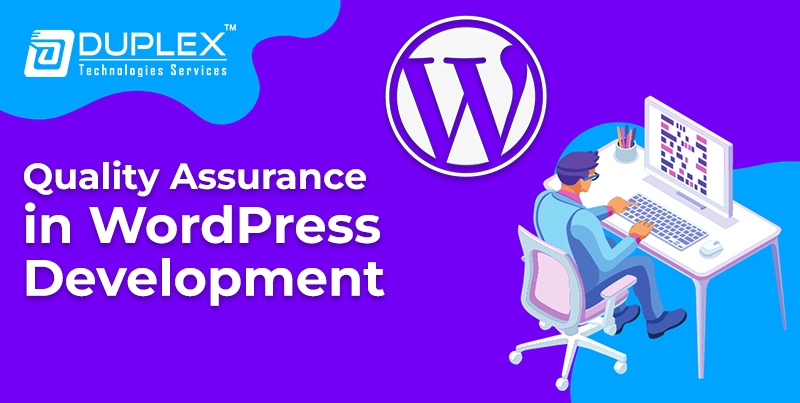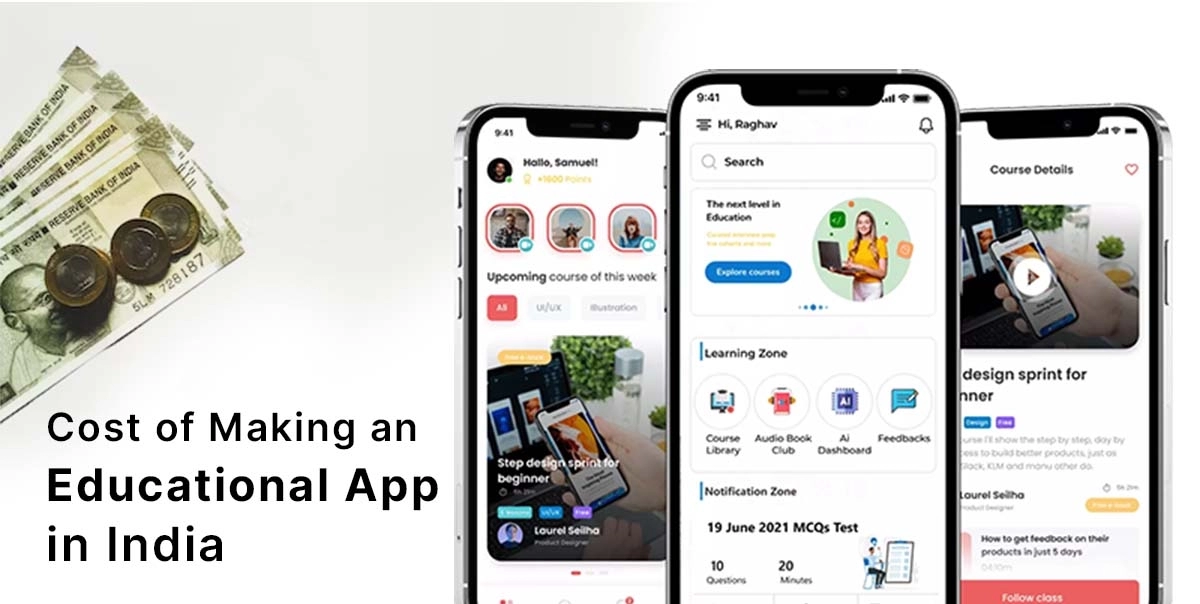Quality Assurance in WordPress Development | Importance of Quality Assurance

Posted By : Deepank Joshi, Posted Date : Sep 07, 2024
Quality Assurance in WordPress Development
Quality assurance is the process by which high-quality, reliable, and user-friendly sites should successfully be delivered in WordPress development. At Dupex Technologies, we value an effective WordPress QA process in building WordPress sites for meeting and sometimes exceeding customer expectations. Indeed, for this comes comprehensive functionality testing in the development phase, together with performance and security auditing, which also includes user experience validation. In fact, if we follow the strict rules of rigorous QA practices, then we should find such issues and be in a position to rectify them from an early stage of development.Besides, stringent QA practices ensure that the end user enjoys seamless, bugless experiences-either one is developing a simple blog or a complex e-commerce platform. In this blog, we will be discussing the main components of quality assurance in WordPress development and how these help in building great web solutions.
Table of Contents
- What is Quality Assurance?
- Understanding the importance of Quality Assurance in WordPress projects
- Key Components of a Robust WordPress QA Process
- Automated Testing Strategies for WordPress Websites
- Cross-Browser and Cross-Device Testing in WordPress
- Why choose Duplex Technologies for WordPress web-development and QA?
What is Quality Assurance?
Quality Assurance in WordPress development is a well-structured process that is intended to make certain the website meets specified requirements and standards of quality before it goes live. That means a course of planned and systematic activities throughout the development life cycle focus on preventing defects and finding issues, verifying the final product aligns with client expectations. QA consists of various testing aspects, including but not limited to: functional testing, performance testing, security audits, and user experience reviews. With solid QA practices in place, developers are assured that WordPress sites are visually appealing and loaded with features while concurrently being dependable, secure, and performance-optimized on a wide array of devices and browsers.
Understanding the importance of Quality Assurance in WordPress projects
Quality Assurance in WordPress projects may be likened to ensuring that the website not only works as it should but also provides an excellent user experience. In this space of digital competitiveness, where the expectations by users keep changing day in and day out, QA is an assured insurance against those unexpected issues that may ruin the reputation or functionality of a site. It's not all about catching bugs but improving quality across dimensions, enhancing performance, and making sure what is being delivered is exactly what the client has visioned for, along with meeting user needs. A proper QA process can reduce post-launch issues significantly, lessen maintenance costs, and enhance user satisfaction and retention rates.
Other key points to emphasize the need for QA in WordPress projects include:
- Ensuring functionality of the website on various browsers and devices
- Identification and resolution of security vulnerabilities
- Optimizes performance and loading speeds of the website; compatible with various plugins and themes
- Enhances customer experience and user accessibility
- Lowers long-term maintenance costs
- Helps with SEO due to technical optimization
- Instills confidence and trust in the client for the final product of build
- Smoother updates and enhancements in the future are possible.
- Helps in meeting regulatory compliance and industry standards
Key Components of a Robust WordPress QA Process
Above all, one needs a decent WordPress QA process that ensures functionality, security, and optimization of a website before it is launched. Among the major points in the WordPress QA process are thorough testing of functionality: this includes all the interactive elements like forms, buttons, or navigation menus; these must be tested to ensure everything works as expected. Another important aspect is testing against cross-browser and cross-device conditions to affirm that the site behaves the same across environments. Furthermore, performance testing is essential because it will help in determining how well the site is loading or how it goes about its speed in general, which might be affected by themes and plugins or by some adjustments to the server settings.
Security WordPress site testing is another important test that may show vulnerabilities, including an outdated plugin, insecure configuration settings, or a weak password that malicious actors could use. Code review is also a part of the QA process, where developers review the codebase for best practices, adhering to agreed principles and standards of coding. Finally, there is UX testing, which ensures a website is intuitive and accessible, while evaluating design elements, content readability, and mobile responsiveness. By attending to these key areas, a rigorous QA process ensures the delivery of a refined and high-performance WordPress website that is both technically sound and serves the needs of its users
Automated Testing Strategies for WordPress Websites
Automated testing strategies are brought into WordPress to quickly identify issues and fix them, leveraging special tools and scripts for the purpose. It involves strategies that efficiently test different aspects of a site for consistent quality and performance with minimal manual intervention. In other words, automated tests have the effect of allowing developers to find regressions quickly and validate functionality, which ensures high code quality across a development lifecycle.
Key Automation Test Strategies:
- Unit Testing: Ensures that specific parts and functions of the code work properly in isolation.
- Integration Testing: Checks how different aspects of the website interact; for example, plugins and themes.
- End-to-End Testing: It emulates the user's interactions and workflow on a site to ensure that all parts of the application function as expected from the user's perspective.
- Regression Testing: Automatic re-execution of previously passed tests, ensuring that newer code changes will not introduce new bugs.
- Performance Testing: The assessment of the site performance and responsiveness under different conditions to perform optimally.
- Security Testing: Run an automated tool that scans through vulnerabilities and potential security issues within the WordPress installation.
- Visual Testing: How it should look on devices and different screen sizes, using visual comparison tools.
Cross-Browser and Cross-Device Testing in WordPress
Cross-browser and cross-device testing is a very important part of any WordPress QA process, which tests the consistency of rendering and the functioning of the website on different platforms and different devices. Since there are a number of web browsers, operating systems, and screen sizes, it is pretty obvious to test the performance and look of a WordPress site with different setups. This approach helps identify and solve compatibility issues, ensuring that users experience perfect smoothness irrespective of their choice of browser or device. Covering these variations will allow developers to enhance user satisfaction while avoiding all potential issues that might arise from inconsistent site behavior.
Key Aspects of Cross-Browser and Cross-Device Testing:
- Browser Compatibility: Verify the website is functioning and looking consistent across main browsers like Chrome, Firefox, Safari, and Edge.
- Responsiveness of Devices: Ensure that your design adapts well to various screen sizes for desktops, tablets, and smartphones to provide the best experience across all types of devices.
- OS Variants: Performance and design testing needs to be performed on OS variants like Windows, macOS, iOS, and Android, just so any OS-specific problems are captured.
- Feature Support: Features and functionalities have to be supported by different browsers because most of them support modern web technologies to different extents.
- User Interaction Testing: Simulate user interactions on diversified devices for the discovery of usability issues or inconsistencies in functionality.
- Visual Consistency: This ensures that design elements, layouts, and media will render effectively on different browsers and platforms for consistency in what one sees.
Why choose Duplex Technologies for WordPress web-development and QA?
- WordPress Development Expertise: Duplex Technologies has profound expertise in WordPress to make sure your website gets the latest best practices, optimal performance, and scalable architecture. Their team has been proud of creating custom themes, plugins, and functionalities to suit your specific needs.
- Comprehensive QA Testing: Considering the strong focus on Quality Assurance, Duplex Technologies provides comprehensive testing for bugs and their improvements before your site goes live. Their QA process covers functional testing, performance testing, and cross-browser compatibility tests to make sure that the user experience is seamless.
- Custom Solutions: Extend the functionalities of WordPress with customized services, including unparalleled design that makes your website unique in appearance and tailored towards meeting your corporate objectives. Duplex Technologies crafts solutions to any business objective you may have, from e-commerce and blogs to corporate websites.
- Responsive Design: Understand the importance of mobile and tablet accessibility. Duplex Technologies ensures your WordPress site is fully responsive, meaning it looks and works beautifully on all devices, whatever the screen size, ensuring a beautiful user experience.
- 4Ongoing Support and Maintenance: Duplex Technologies offers good support and maintenance post-launch. They do updates, security patches, and continuous improvements necessary to keep your website running smoothly and securely for an extended period after the launch.
- Customer-Centric Approach: Their process is extremely client-oriented; hence, effective communication as pertaining to your particular needs and vision is always in the limelight. They work closely with you throughout the development process to ensure that the final product will be to your expectations and business requirements.
Get in touch with Duplex Technologies for WordPress web-development and QA
Duplex Technologies covers everything from high-class WordPress web development and QA to expertly crafted top-notch, bespoke WordPress solutions. We promise rigorous testing to ensure the performance and security of your plugins. Whether it's a new website, a custom plugin, or end-to-end QA services you need, we are here to help. Contact us today at +91-9452000089 to discuss your project and let Duplex Technologies bring your dream into reality with precision and excellence.




















































































